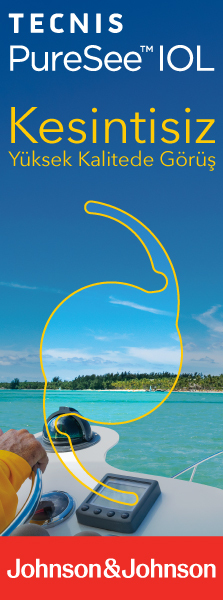TJ-CEO
2008 , Vol 3 , Num 2
Simultaneous Application of Intravitreal and Intracameral Bevacizumab in a Patient with Neovascular Glaucoma
1Bilim Ü., Avrupa Florence Nİghthingale Eğit. ve Araş. Hast., İstanbul, Asist. Dr.2Bilim Ü., Avrupa Florence Nİghthingale Eğit. ve Araş. Hast., İstanbul, Yard. Doç. Dr.
3Bilim Ü., Avrupa Florence Nİghthingale Eğit. ve Araş. Hast., İstanbul, Prof. Dr. Intravitreal bevacizumab injection for the inhibition of vascular endothelial growth factor (VEGF) is used for the treatment of choroidal neovascularization, macular edema, and neovascular glaucoma.
The case that we report is a 69-year-old female patient with a 15-year history of diabetes; argon laser photocoagulation was performed in another clinic, and she presented with pain and redness in the right eye. In her examination, intraocular pressure was 57 mmHg, and, in biomicroscopic and gonioscopic examinations, corneal edema, and iris and angle neovascularization were determined. Iris angiography revealed marked leakage from new vessels. The patient received antiglaucoma therapy including latanoprost, timolol maleate+dorzolamide fixed combination, brimonidine, and acetazolamide. Intravitreally 1.25 mg/0.05 ml bevacizumab was injected into the upper temporal quadrant of the right eye and at the same time 1.25 mg/0.05 ml bevacizumab was injected intracamerally into the same eye. In biomicroscopic and gonioscopic examinations 36 hours after injection, the neovascularization on the iris and angle was completely resolved, and after 1 week the intraocular pressure was 17 mmHg with antiglaucoma therapy (latanoprost, brimonidine, timolol maleate+dorzolamide fixed combination). After injection, panretinal photocoagulation was completed by means of relatively good dilatation of the pupil.
In the treatment of neovascular glaucoma for inhibition of VEGF, the simultaneous application of bevacizumab injection, intravitreally and intracamerally, may be a useful primary or adjuvant therapy. Keywords : Neovascular glaucoma, bevacizumab





